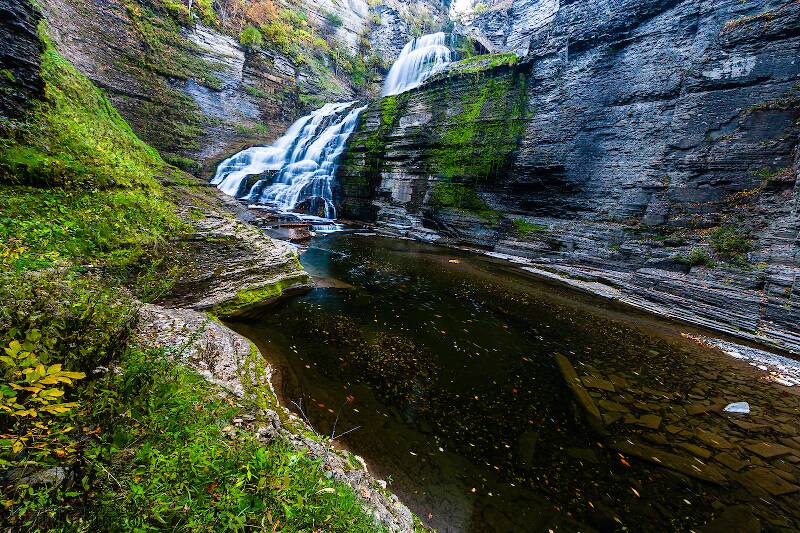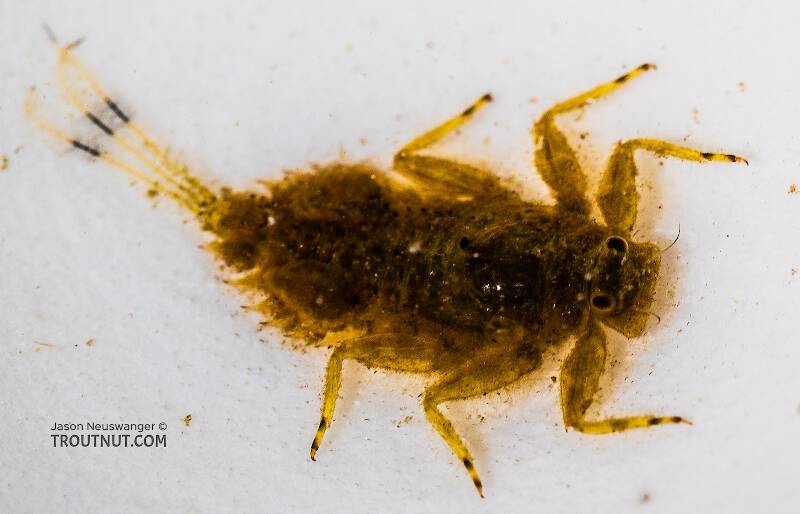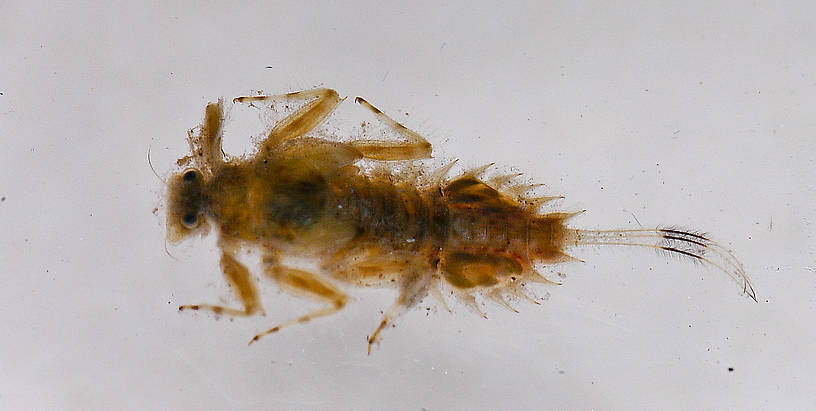
Salmonflies
Pteronarcys californica
The giant Salmonflies of the Western mountains are legendary for their proclivity to elicit consistent dry-fly action and ferocious strikes.
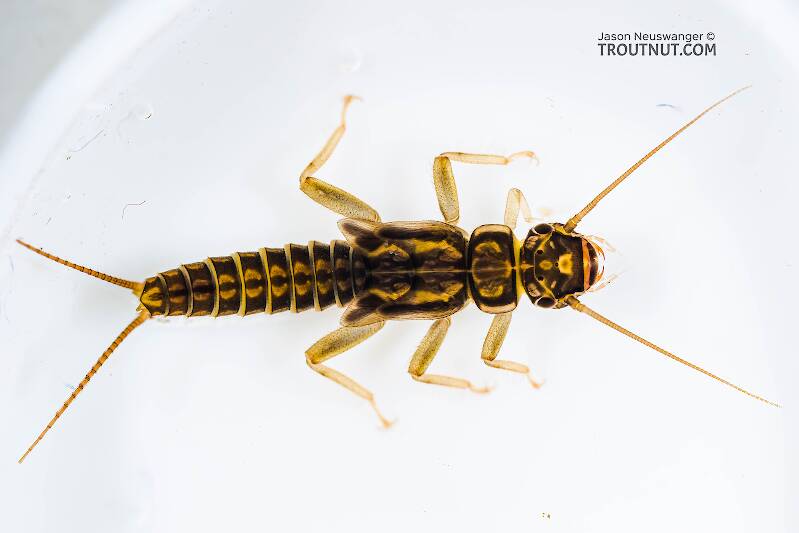

Mayfly Species Timpanoga hecuba (Great Red Quills)
Anglers call them by a confusing array of names, although many fly shops have fortunately started to clear things up by rightly calling them Hecubas. Great Red Quill and Western Red Drake seem fairly descriptive, and some refer to them as Giant Dark Hendricksons. A fly shop serving Yellowstone out of Gardiner, Montana calls them Drake Mackerels in their hatch chart.
Where & when
Time of year : Mid-Summer through early Fall
In 6 records from GBIF, adults of this species have been collected during September (50%), August (33%), and July (17%).
In 12 records from GBIF, this species has been collected at elevations ranging from 4741 to 9360 ft, with an average (median) of 5269 ft.
Species Range
Spinner behavior
The duns may wait for several days before returning together as spinners, and in Knopp and Cormier say this can lead to fishable spinner falls.Nymph biology
Current speed: Slow
Substrate: Silt
Physical description
Most physical descriptions on Troutnut are direct or slightly edited quotes from the original scientific sources describing or updating the species, although there may be errors in copying them to this website. Such descriptions aren't always definitive, because species often turn out to be more variable than the original describers observed. In some cases, only a single specimen was described! However, they are useful starting points.
Male Spinner
Wing length: 12–14 mm
Head light gray, smoky at base of ocelli; antennae yellow brown; upper portion of eye orange, lower portion gray. Prothorax pale, the pronotum yellow brown with smoky markings; mesonotum yellow brown, medium brown between the inner parapsidal furrows anterior to the transverse mesonotal groove and on the scutellum; metanotum medium brown, pleurae largely pale with some brown sclerites, especially the mesepisternum; thoracic sternum pale, furcisternal plates light brown, a dark stripe along the anterior margin of the mesosternum. Forelegs medium brown, the base of the femora and the tarsi paler; middle and hind legs yellow brown; basal tarsal segment medium brown. Wings hyaline, clouded along the costal margin; venation medium brown. Tergites smoky brown to reddish brown, the anterior and posterior margins pale; near the pleural margin is a pale spot surrounded by an irregular darker marking; a broad pale median stripe present; pleural fold with a fuscous stripe attaining neither the anterior nor posterior margins of the segment. Sternites with a broad reddish irregular transverse stripe arising from the middle of the pleural margin of each sternite and arching forward to near the anterior margin, if extensive this reddish stripe may have a pair of oblique pale paramedian patches and a pair of pale submedian spots within it; segments eight and nine with large postero-lateral projections, segments four to seven with irregular twisted projections. Genitalia as in Fig. 4. Cerci and terminal filament dark brown at base, becoming paler distally.
Female Spinner
Wing length: 12–15 mm
Similar to male except for usual sexual differences. All legs similar to middle and hind legs of male. Abdominal markings less conspicuous than in male. Apex of subanal plate rounded.
Nymph
General color variable, light brown to medium brown. Head light brown and hairy, subquadrate in shape, and widest across the frontal shelf; antennae brown; eyes black. Pronotum widest at posterior margin; antero-lateral corner developed into a spine; a short spine on each side near the middle of the lateral margin; paired sub-median spines near the posterior margin. Mesonotum without spines. Coxae and trochanters reddish with long hairs and spicules on anterior surface; femora broad and prolonged apically into an acute spine; anterior and posterior margins lined with long hairs and spicules, with spicules on dorsal surface; tibiae light brown with dark band near middle; anterior and posterior margins lined with long hairs with a few spicules on dorsal surface; tarsi pale with wide dark band at proximal end and a dark spot on the distal end; claws dark and without denticles (Fig. 10). Abdomen extremely flattened, with or without paired spines on the tergites; lateral extensions prolonged into sharp sawtooth-like postero-lateral spines (Fig. 11), color reddish-brown with lateral extensions pale and tips of postero-lateral spines black. Sternites marked with wide reddish bands occupying the anterior half of the segment, postero-lateral spines two to nine with a wide dark oblique band. Cerci and terminal filament fringed with long hairs, color dark reddish-brown at base, paling distally, interrupted by a narrow dark basal band and a wide dark transverse band in the apical third.
Specimens of the Mayfly Species Timpanoga hecuba
1 Female Dun
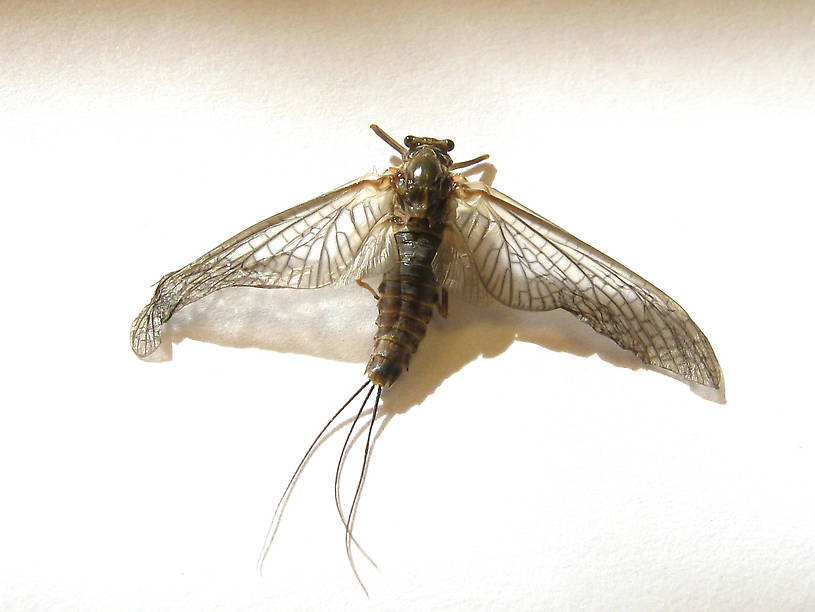
2 Nymphs
Start a Discussion of Timpanoga hecuba
References
- Arbona, Fred Jr. 1989. Mayflies, the Angler, and the Trout. Nick Lyons Books.
- Caucci, Al and Nastasi, Bob. 2004. Hatches II. The Lyons Press.
- Knopp, Malcolm and Robert Cormier. 1997. Mayflies: An Angler's Study of Trout Water Ephemeroptera . The Lyons Press.
Mayfly Species Timpanoga hecuba (Great Red Quills)
Species Range
Common Names
Resources
- NatureServe
- Integrated Taxonomic Information System
- Global Biodiversity Information Facility
- Described by Eaton (1884)

